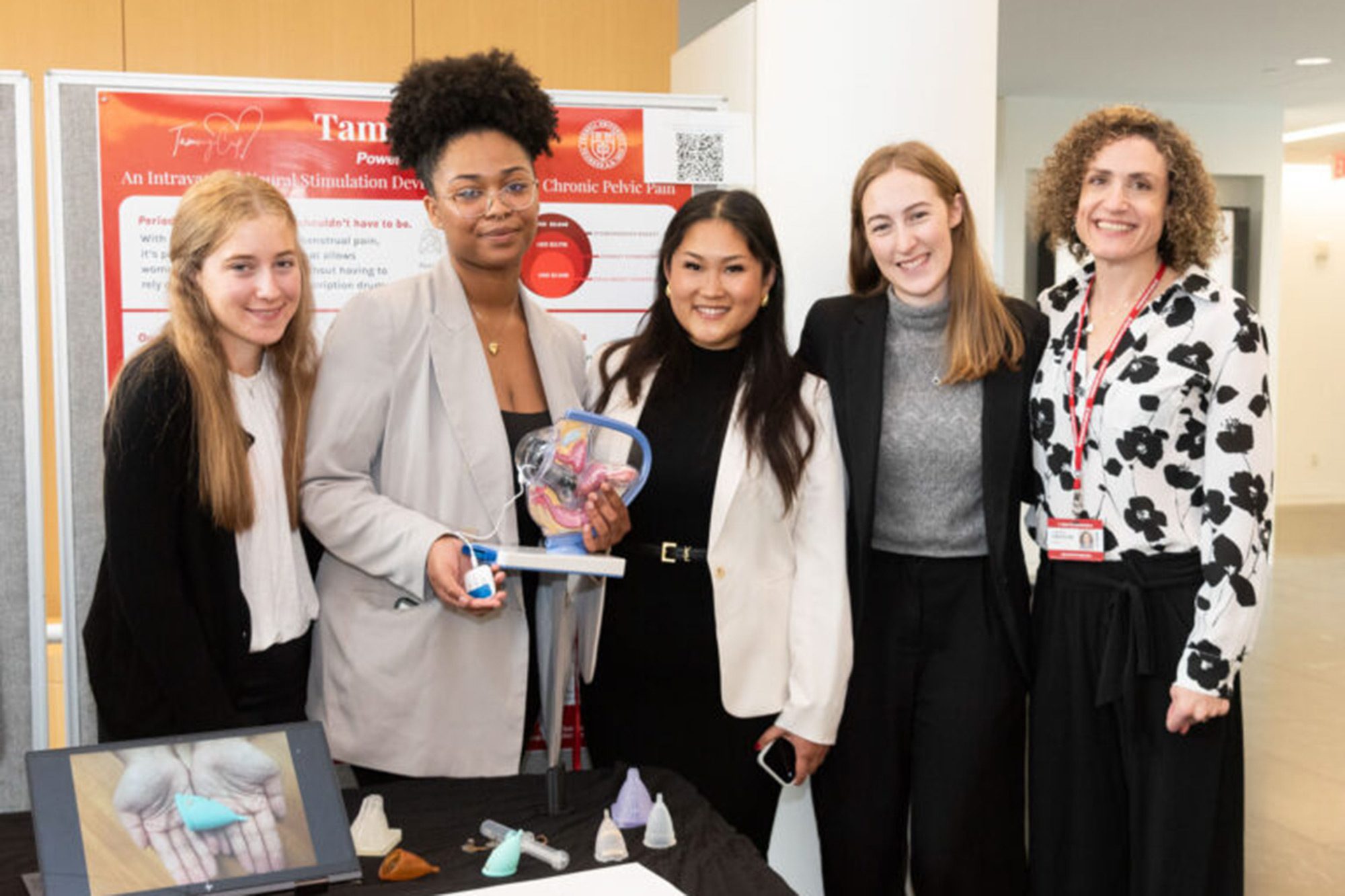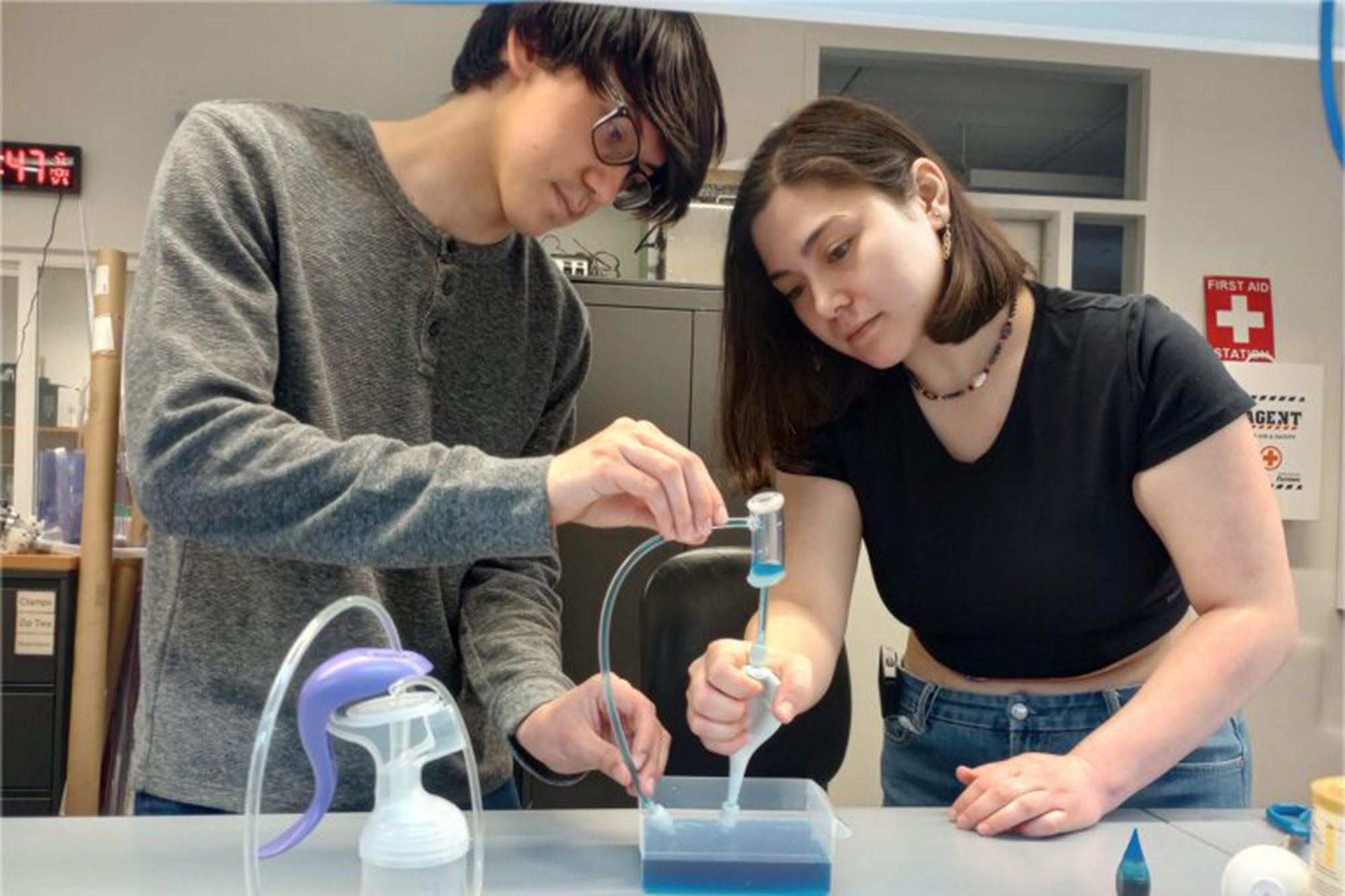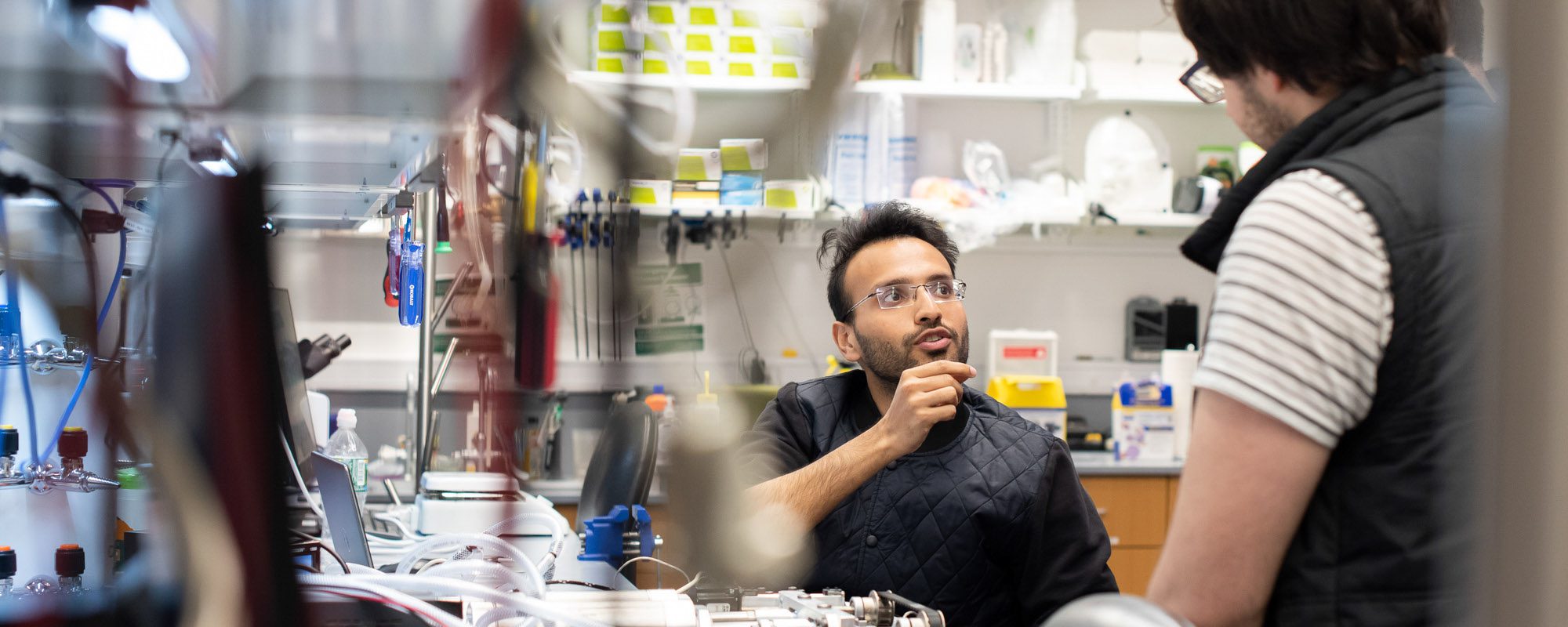Project focus can vary widely, from theoretical study (e.g., aerodynamics of a neonatal respirator) to laboratory experiments (e.g., tissue engineering of an intervertebral disc) to industrial medical device design. The experience culminates with a day-long industry engagement day and project showcase that brings students together to connect with and present their projects to faculty, alumni, project sponsors and professional attendees. Projects align with either the professional or academic pathway.
Professional
The projects in the professional pathway are worked on in teams over two semesters. Teams identify and/or validate unmet clinical needs while looking into a core problem, affected population and desired outcome for the project. Together, teams engineer a fully functional prototype that addresses the defined need. The program directors select and match teams with sponsors and projects that are diverse, challenging, and aligned with our educational goals and industry segments.
Academic
In the academic pathway, individual students work with a principal investigator on an academic research project of their choosing.
Who Sponsors M.Eng. Projects?
-
Clinics
Clinicians with a field of specialty and/or with ideas of potential needs. Clinics include:
- Weill Cornell Medicine (NYC)
- Hospital for Special Surgery (NYC)
- Cornell Veterinary Medicine (Ithaca)
- Guthrie Robert Packer Hospital (Pennsylvania)
-
Industry
Industry partners work closely with student teams to explore a field of application and/or already identified needs. Students maintain a certain level of independence as they analyze and validate the need as well as define the solution requirements and solution implementation. Company sponsors include:
- Welch Allyn – Hill-Rom
- West Pharmaceutical
- Johnson & Johnson
-
Cornell Faculty
Cornell faculty often need support devising and implementing novel instrumentation or translating a research idea from lab-to-product. Examples include:
- Portable handheld device for real-time detection and treatment of premature birth risk
- Microfluidic Instrument version of a micropipette aspiration assay
- Device to aid diabetic wound healing
-
Community and Humanitarian Organizations
Sponsored by members of our regional community and/or driven by humanitarian reasons. Examples include:
- Intelligent and Adaptive Orthopedic Brace for Haleigh
- TEchoLocation – Combining technologies to help the visually impaired in under developed populations
- Strategies for Improving Prevention of Mother-to-Child Transmission (PMTCT) of HIV



M.Eng. Design Project Examples
-
Intravaginal neural stimulation device for acute and chronic pelvic pain
A non-pharmacological treatment option for patients experiencing chronic pelvic pain and endometriosis.
-
Robotic mobility device for toddlers
A powered mobility device for toddlers (ages 1-3) with delays or impairments to enhance their environmental interaction and maintain their emotional, perceptual, cognitive, and social skill development.
-
External ventricular and lumbar over-drainage detection
A non-invasive device to monitor brain fluid drainage and alert medical staff when over-drainage occurs.
-
Detection and response system for opioid overdose
A device to monitor, detect, and treat opioid overdose (65,000 American deaths annually, a five-fold increase since 2000) that constantly monitors and automatically administers treatment within the 6-8 minute window when an overdose is detected.
-
Augmented reality for cancer mapping
Developing better imaging models to detect cancer reoccurrence after surgery.
-
Behavioral monitoring for small animals with diabetes
Partnering with Med Dimensions, a startup revolutionizing veterinary healthcare, to develop a novel method of monitoring diabetes in pets.
-
Improving blood line draws
An ergonomic integrated system that drastically reduces workflow to improve sample quality and minimize the incidence of bloodstream infections in patients with a central line.
